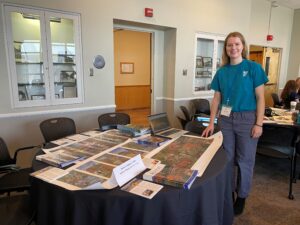Learning from experts in the resiliency space
I’m going to take a quick break from our Resiliency in action series to reflect on the recent National Oceanic and Atmospheric Administration (NOAA) Environmental Literacy Program (ELP) Grantee workshop that I attended in June in Boulder, CO, along with NNC Science Director, Kate Semmens. Many leaders from the resilience field attended, and it was a rewarding opportunity to share NNC’s work and learn from others. From all of the presentations and conversations I had during the workshop, I came away with the overwhelming sense of clarity that community engagement is central to resilience work. Engaging community members from the start can increase buy-in and ownership and lead to projects that better address community needs. Below I describe a few reflections from the workshop that underline the need for increased community engagement in resiliency work.
DEIJA is the future
In recent years, diversity, equity, inclusion, justice, and accessibility (DEIJA) efforts have come to the forefront. Many institutions have responded by doing trainings, writing statements, creating or expanding departments, and adding a critical lens to current efforts all in an attempt to more seriously incorporate DEIJA considerations. NOAA ELP is one such program that has taken some of these steps to ensure that resilience funding is getting to all types of communities with diverse needs, not just ones that have major institutions with great grant-writing departments. Since the last ELP workshop two years ago, the types of institutions and projects funded under ELP have shifted. There is now much more emphasis on engagement with community-based organizations and having the members of the project team better reflect the community that they will serve with the project.
This shift felt noticeable and overwhelmingly positive because youth and community members had a seat at the table at an invite-only workshop hosted by a federal agency. The conversations we had about building resilience to natural hazards and climate change in our communities felt more nuanced and human-centered rather than bureaucratic. The keynote talk by Parker McMullen Bushman of Ecoinclusive Strategies drove this home by describing how up until this point Black, Indigenous, and People of Color have often been left out of environmental decision-making spaces even though they have borne a disproportionate burden of environmental degradation and pollution. To me, it clearly underscored the importance of meaningful community engagement when designing and implementing resiliency projects. In NNC’s CREATE Resilience project, funded by ELP, we worked extensively with local high school youth to teach them about natural hazards and included them in helping us educate the community about those hazards. We also engaged community members through a series of activities and events including forums and community mapping. This engagement informed the creation of large murals reflecting each community’s vision of resilience, completed by local artists. The conversations in Boulder made it clear how important it is to go even further and increase engagement with other local community-based organizations and community members. This is something we hope to do in future CREATE work but also with all of our NNC programming.
Combining community engagement strategies increases impact
At the workshop, I was particularly struck by a talk by David Sittenfeld from the Museum of Science Boston, who described how their science-to-civics process has gained traction nationwide. David and his team are using their ELP funding to elicit policy-relevant input from community members because they understand that everyone should be part of all phases of the policy process, including agenda setting, decision-making, and policy formation. They collect this data using a collaborative forum structure. In each forum, they use a climate or natural hazard scenario based on real communities and situations, and participants must decide how to use limited resources to make changes. Some changes are reactive, while others are responsive or proactive. Each change has an associated cost value, and every participant is assigned a role with a specific set of interests. Participants must negotiate to determine how best to use their limited resources while considering their assigned interests and trade-offs of costs, benefits, and likely effectiveness.
The forums alone have led to a great deal of information for local planners and decision-makers, particularly in the communities upon which the forum scenarios are based. However, David and his team have recently started pairing forum results with citizen science data collection efforts. Citizen science involves public participation in the scientific process, often collecting data and sharing it with researchers and agencies for use. These new combined efforts have resulted in projects like Wicked Hot Boston, providing an even more complete picture from community members about decision-making and actual hazard conditions. Local and regional decision-makers are able to use this information to make significantly more informed resiliency plans. I really appreciate this innovative approach that provides multiple ways for community members to get involved.
We are in this together
None of us can make our communities more resilient alone. Within a community, we need people from all different neighborhoods, sectors, and demographic groups, plus decision-makers to work together throughout the entire process of a resiliency project. We also need institutions who are thinking about resiliency working together and sharing best practices. The ELP workshop was an excellent space to share ideas, make connections, and learn about what has worked in communities across the country. I look forward to continuing to make Easton and the Lehigh Valley a more resilient place to live and work with the help of community members.

Sharing information about NNC’s CREATE Resilience project with other workshop attendees

